Concept, Characteristics and Importance of Child-Centred Education
In most schools, instruction is centred on the curriculum, and students are urged to modify their study habits. Although this strategy needs little work, it also yields less results. In the twenty-first century, parents have high expectations for their kids' academic performance, so it's critical to set the groundwork early on in their schooling.
The idea that kids should be encouraged to learn at their own pace is the foundation of child-centred education in the modern world. Their learning activities should be customised to meet their individual demands and be inclined toward their hobbies. More often than not, standard teaching techniques don't yield the desired outcomes.

What is Child-Centric Education?
Beginning with teachers including students in decision-making processes in the classroom and having faith in their ability to lead, child-centred education is practised. A youngster finds learning more intriguing when they understand the significance of the topic under discussion. When a child chooses the subject of the lesson during creative learning, they might use their imagination to come up with unique perspectives on the same topic. Children are better able to combine their interests with the concepts and skills by brainstorming and conversing together. Children must take responsibility for their own learning and be engaged participants.
Characteristics of Child-Centric Education
● It is designed with the child's unique requirements and interests in mind.
● It combines topics like life skills to foster the group culture required to start collaboration and enhance soft skills.
● Child-centric education promotes kids' general wellbeing and gives them the chance to explore outside of the classroom, allowing tem to succeed academically.
● These classrooms allow children to learn at their own pace and ease the transition into a formal classroom because they are less regulated and feature flexible timetables and curricula.
● A child who has more exposure to extracurricular activities is better able to identify their strengths and develop their innate skills.
Why is Child-Centric Learning and Life Skills Education a Necessity?
Bringing attractive and meaningful learning into harmony.
There is a widespread notion that educational institutions must sacrifice the fun of learning in order to deliver useful information.
Possibility of Self-Discovery
Every child begins life with a sense of wonder and curiosity about the world. But if a kid is forced to deal with issues they're not ready for, they might lose their sense of adventure. Children learn about their talents, interests, and skills with SCL through inquiry, problem-solving, independent thought, invention, and creativity.
Developing Responsibilities
Children become more empowered as they take ownership of their own learning as part of the process of group learning. Teachers foster an atmosphere where students can experience their decisions and the results. They gain the ability to exercise their independence and accept responsibility for their acts through this activity.
Importance Of Child Centred Education
Numerous studies indicate that child-centred education serves as a learning tool for kids starting at a very young age. Early brain development is stimulated. It encourages children to dream and create, which is crucial to child-centred education. Child-centred education strengthens memory while encouraging healthy development and critical thinking abilities.
Child-centred education also gives kids the chance to practise social skills. Children learn to cooperate, adhere to rules, hone self-control, and generally get along with others when they play together.
What are the Principles of Child Centred Education?
Play and inquiry.
Children learn to get along with one another, to know themselves, and to learn about the world around them via play. People believe that being curious about the world and learning via play are fundamental aspects of being human. They should be nurtured both for their own sake and as the cornerstone of a child's future learning.
Self-Discovery
The best schools in Hadapsar Pune hold that kids love to learn and that pushing them to tackle challenges they're not ready for can rob them of their sense of adventure. Thinking flexibly is encouraged in both children and adults. Children learn best when they are emotionally secure, are given intellectually challenging tasks, and are encouraged to explore and experiment. The teacher's job is to encourage kids to try new things, learn new things, and move forward.

Choices and Results
The children gain self-confidence as they take ownership of their roles as learners and community members; with this ownership comes freedom and trust, both of which they value. The environment that allows kids to experience their own decisions and results must be created by teachers. Learning happens in this manner.
Mutual trust, compassion, and empathy
Children learn best in an atmosphere where teachers and other students are respected, believed in, and given nothing but good treatment. The learning groups are small, and a kind instructor monitors progress and represents each child's interests. Younger children are befriended and mentored by older kids, and these relationships can last a lifetime. In a setting that is both physically and emotionally safe, children learn to resolve interpersonal conflicts through talking and listening, with the assistance of teachers when necessary.
Taking Sensible Risks
Children must take chances as they tackle ever-more challenging tasks as they learn. Children must be able to fail, make mistakes, and learn from their failures if they are to achieve. Failure is a potent teaching tool in a supportive atmosphere. It is the duty of the instructor to recognise when each student is prepared to go on and to encourage that initiative.
See also - How To Prepare Child For Nursery Admission?
While putting child-centred learning into practice has numerous obstacles to overcome, these obstacles can be faced and conquered. With the establishment of the New Education Policy 2020 in India, it has already begun. This kind of child-centred education is crucial for the development of a country because it progressively creates autonomous thinkers who are equipped with the resources for lifetime learning.
What is child centric classroom?
Ans - A classroom that puts the needs of the students first has a flexible teacher who meets those requirements.
Why is modern education called child centric?
Ans - The idea that kids should be encouraged to learn at their own pace is the foundation of child-centred education in the modern world. Their learning activities should be customised to meet their individual demands and be inclined toward their hobbies.
Who is the founder of child centric education?
Ans – John Dewey
Why Rousseau is called the father of child centric education?
Ans - In his idea of education, Rousseau placed a strong emphasis on the value of expression in raising well-rounded, independent thinkers. He had the opinion that children will develop to their fullest potential, both academically and ethically, if given the freedom to grow naturally, free from the restraints placed on them by society.
What are the aims of education according to Rousseau?
Ans - Learning, according to Rousseau, is the main objective of education. Our fundamental practise is "learning about the human predicament"; "the science of human duty is the sole science to teach children." To comprehend the teacher, in Rousseau's view, is to comprehend the child's potential for the future.

Ms.Akshada received her Art Teacher diploma from Sir J.J. School of Art. Akshada has been teaching art for four years. She is a young multidisciplinary artist working in drawing, sketching, painting, and Digital Art .While Akshada works in all types of media, she believes it all starts with a strong foundation in drawing. As a teacher she tries to create an understanding and interest among students towards Art as a means of personal growth and career choice.
Related Topics
More from same author.
Enquire Now

Featured Blogs
Top 8 Questions That Every Parent Should Ask Before They Fill The School Admission Form
Which Factors Influence the Choice of School for Admissions in Pune?
The Boom of Nursery Schools in Hadapsar, Pune
Why is International School Education Gaining Such Importance?
Top Scholarships

Global FUTURE-READY Merit Scholarship
90% and Above

Mahatma Gandhi Universal Values Merit-cum-Means Scholarship
GROSS FAMILY INCOME : Below 8,00,000 INR to 25,00,000 INR

Dr APJ Abdul Kalam Global Skills Scholarship
Talent Based - Technology

9GEMS Holistic Development Scholarship
Talent Based - 9 GEMS

GIIS Global Sports Scholarship
Sports Excellence

Global Citizen Scholarship
93.0% and Above
Nam libero tempore, cum soluta nobis est eligendi
Trending Blogs
Do you want to ensure a bright future for your child? Make the best decision of getting your child admitted to an international school for the best academic education and other beneficial factors.
Kids are learning from home in the wake of coronavirus.
As a parent, you want to provide the best education you can to your little one.
When considering admission at a school in Pune, parents are often interested in learning about the impact of technology and online learning on their children.
Most parents enrol their children in kindergarten at the age of 2.5 years.

GIIS Hadapsar Campus
GIIS Balewadi Campus

ISO 9001: 2015
Iso 45001: 2018.

Subscribe to our Newsletter

Request for a Call back

The Importance of Child Centered Education in the 21st Century Classroom
Though we know our administrators constantly mention its importance, there are often gaping holes in their explanations regarding the importance of child centered education. There is a multitude of reasons why this teaching methodology is not only important but extremely effective. However, often the importance of child centered education is overlooked as soon as a teacher tries to figure out how to navigate this method on their own, without any true guidance on how to “get it done”.
So how do you “get it done” in your classroom? How do I make my lessons child-centered? How does focusing on the importance of child centered education look like inside the walls of my classroom? These are all valid questions to ask, and hopefully, this blog post can help you navigate through the abundance of information out there about child-centered learning.
First, you must realize what child-centered learning is. It is, simply put, a style of teaching that focuses on the needs of the student, rather than trying to get them to conform to your own standards of expectations and achievement. Child-centered education gains its roots from Jean Piaget, who believed that children learn best by doing things. He said, “Learning is not achieved by teaching, but teaching is useful only as it contributes to the natural process of learning.”
Building Relationships
One of the first steps you are going to have to take in transitioning your classroom into a child-centered environment is building positive relationships with your students. This is the key to success in any effective and meaningful learning environment, whether it is child-centered or not. As educators, we must learn to understand our students on a personal level so that we can meet their individual needs and fulfill the importance of child centered education. With this understanding, we aim to build relationships with our students that foster positive communication and allow us as teachers to better serve them.
Second, it is important that parents are involved in their child’s education at home. This will help create a strong support system for the student when they are in school. If students feel supported by their family members, they are more likely to be motivated and work harder in class. Understanding your students on a personal level and building relationships with them is a key to creating this support system.
One of the most important things to understand about child-centered education is that it does not stem from traditional learning methods, such as textbooks or lectures. Often, in the effort of wanting students to be “engaged” in their own learning, many teachers turn towards the use of technology and other “fun” methods of teaching.
While these methods are great for motivating students, child-centered education must stem from a deep understanding of your students as people, not from the way you want them to learn or be motivated. Some ways that teachers try to motivate through fun activities may actually be working against this deeper understanding of the child. Activities used to motivate students may be misused by teachers who do not fully understand their students or how to best teach them.
Student Interest
Another key aspect of creating a positive learning environment and the importance of child centered education is that the curriculum, activities, and lessons are driven by the students’ interests. It is important that your lessons center around what your students want to learn about rather than what you want to teach them.
In this sense, a child-centered class is not necessarily a loud and chaotic one. Rather, it is a place where children feel safe enough to explore themselves and the world around them without fear of judgment or ridicule. It is a safe and nurturing environment for children to grow and learn, and it is an environment where they feel valued as unique individuals with something unique to offer the world around them.
One of the most cited examples of the importance of child centered education is the Sudbury Valley School . This is a school where students are in control of their own paths to learning. They choose what they want to study when they want to study it, and for how long. The school environment provides everything that students need for self-directed exploration, and the school itself does not interfere with this relationship between students and the environment.
You don’t have to teach at a niche school like this one to have the same effects in your classroom though. It is completely manageable to do this without the larger picture of an entire school dedicated to this method.
The important thing is to make sure that your students are interested in what they are learning and you understand the importance of child centered education.
This means that you should be willing to change the curriculum, activities, and lessons accordingly if your students aren’t interested in them for some reason. It could be something as simple as forcing children to repeat task after task until they become proficient at it while never giving them a chance to explore on their own. It could be something as complicated as not having enough resources available, or it could even be a matter of simply not knowing how to teach a particular material.
These are problems that can be overcome with the right approach. The first thing you need to do is give your students a chance to explore and learn about their interests on their own. This means that you should allow them enough space and time within your lessons, or else provide more material for them to work on outside of class if they finish something.
Another option is to split up your class into two groups: those who are finished and those who wish to continue with the material. The latter group can work on more activities or lessons related to their interests while the former can have fun with other games, toys, or materials that are available in the classroom or do something else entirely.
Why the Importance of Child Centered Education
The importance of child centered education develops for many different reasons, such as:
1. Students ask questions more often in a child-centered classroom because they are exploring their own minds and interests rather than answering questions just to please teachers. At the end of the day, it is important for teachers to remember that children are not little adults – they do things in their own time.
It is then up to us as educators to create lessons and activities that hold their attention despite this slow pace. Sometimes this will be achieved through fun and engaging activities, but other times it will require that we build students up and encourage them to do their best even when it doesn’t seem fun.
2. Students will explore different methods of learning more effectively and the importance of child centered education when they are the ones in control. They may choose to write out their thoughts, draw pictures of their thoughts, type out their thoughts using a computer program, or even create a video presentation. The more that students feel ownership for their own learning and the methods they use to express that learning, the higher likelihood there is that they will continue to use those methods in the future.
3. If teachers are more open to different learning styles and techniques by using them themselves, they may better understand students who struggle with traditional teaching methods. Sometimes it is easy for teachers to think that because something worked for them or their mentors that it will work for everyone else too. However, it is important to remember that not all students learn in the same way.
4. Students who feel like they are constantly being judged or evaluated by their teachers tend to shut down and avoid taking risks when exploring new things. If teachers create an environment where mistakes are allowed, children can take more risks knowing that they will be safe no matter what happens. This can lead to a greater sense of self-esteem and academic growth for students.
Students with a lower sense of self-esteem or social anxiety may flourish better in a child-centered environment, as these children will not be pushed into feeling uncomfortable by teachers who have their own agenda.
There are still going to be students who have the same needs in a child-centered classroom as they would in a teacher-led class. These include students with varying social and learning abilities, students with disabilities, and students whose first language is not English. All of these factors play an important role when exploring new ideas or additional accommodations for children.
5. Teachers who feel more comfortable in a child-centered classroom tend to be happier teachers overall because they are less stressed about constantly meeting arbitrary deadlines or sticking to the curriculum so rigidly that it doesn’t allow time for creativity, fun, or self-growth.
These are just a few reasons for the importance of child centered education when teaching. In order for these methods to be successful, it is important that teachers don’t simply give up their authority as educators and turn over all decisions to students who have no prior experience being in charge. Rather, this should be a transition of power and decision-making that is taken one step at a time.
Teacher Buy-In and the Importance of Child Centered Education
Child-centered education today is not just something teachers have jumped on because it sounds cool. It is the result of decades of research, learning, and growth. There are many benefits to having a child-centered classroom that not only benefit students but also the teachers who teach them.
Remember, by allowing children to explore their own interests at their own pace, they will have more ownership over what they learn and how they learn it. This will lead to a greater sense of self-esteem and a deeper understanding of the material they are covering.
The importance of child centered education also shines because it gives students an opportunity to learn not just from their teachers, but from each other as well. This is an important part of growing up and learning how to become a productive member of society. By having the freedom to explore the different ways children learn, teachers are able to see which strategies are most effective for their students. This can help them better guide their students through new information and make learning more accessible rather than restrictive.
A child-centered classroom is not something that should be done haphazardly or halfheartedly, but instead with full dedication from teachers and students alike. Only when caregivers, educators, and children are all brave enough to explore new possibilities in education will the child-centered classroom flourish.
The importance of child centered education is clear: children are more likely to have better self-esteem, a deeper understanding of the material they are learning, and will be able to take information away from their peers as well as teachers. Without these things, children run the risk of being less engaged in their education which will ultimately lead to poor academic performance through school.
Child-centered education is not just a fad that has been created by teachers looking for something to do. It is the result of decades of research, learning, and growth. There are many benefits to having a child-centered classroom that not only benefit students but also the teachers who teach them.
Teachers are just people who care enough about their students to make sure they get the best education possible, even if that means changing the way they’ve always done things. I hope this has helped some of you gain more insight into the importance of child centered education and why it is so important in today’s ever-changing world.
Stop Driving the Teacher Struggle Bus
Are you struggling with student engagement, apathy, or keeping your class on track?
💫💫 There’s hope! 💫💫
Join my free teacher workshop “ Choosing Choice ” and in just 45 minutes, you’ll craft a practical plan to revitalize your teaching. Discover the magic of student choice in boosting engagement, gain quick implementation ideas, and explore strategies for year-long success.
Unlike overwhelming workshops, my approach guides you in real-time, providing more classroom options, reducing stress, and giving you more personal time.
Plus, you’ll earn a 45-minute professional development certificate and have 7 days of access.
Don’t miss this chance to transform your teaching; click below to secure your spot now!
About the Author: Jenn Breisacher
After moving from a teacher-dominated classroom to a truly student-centered one, Jenn found herself helping colleagues who wanted to follow her lead. In 2018 she decided to expand outside of her school walls and help those out there who were also trying to figure out this fantastic method of instruction to ignite intrinsic motivation in their students. Read more about her journey with Student-Centered World at studentcenteredworld.com/about
You May Also Like
10 bulletin board ideas that are fun, easy, and interactive, backward design for lesson planning and learning, easy tips for student-centered education in the 21st century, leave a reply cancel reply.
Your email address will not be published. Required fields are marked *
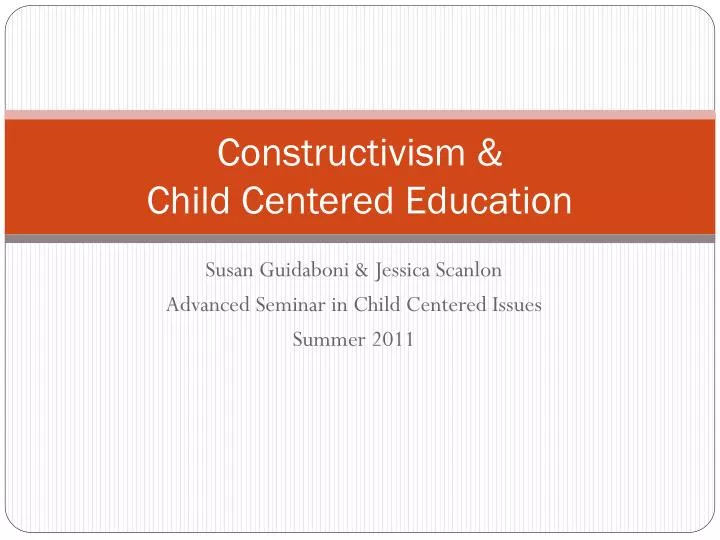
Constructivism & Child Centered Education
Jul 31, 2014
260 likes | 1k Views
Constructivism & Child Centered Education. Susan Guidaboni & Jessica Scanlon Advanced Seminar in Child Centered Issues Summer 2011. What is Constructivism?.
Share Presentation
- instructor supplies
- teachingresources classroomtips constructivist
- elementary setting middle school
- higher order thinking skills

Presentation Transcript
Constructivism & Child Centered Education Susan Guidaboni & Jessica Scanlon Advanced Seminar in Child Centered Issues Summer 2011
What is Constructivism? • Constructivism is a learning theory that suggests that human beings create their own learning based on interactions and experiences they encounter and come into contact with first hand. • The learner is actively engaged, solves problems, and collaborates with other learners.
Effects of Constructivism Child School Independence Actively Engaged Explore new concepts Develop questions and utilize higher order thinking Reflect on learning Correct misconceptions Community of actively engaged learners Focused on students obtaining knowledge through experience Teachers facilitate learning experiences and encourage higher order thinking skills
The 5 ‘E’s Model • Engage - students encounter the material, define their questions, lay the groundwork for their tasks, make connections from new to known, identify relevance • Explore - students directly involved with material, inquiry drives the process, teamwork is used to share and build knowledge base • Explain - learner explains the discoveries, processes, and concepts, that have been learned through written, verbal or creative projects. Instructor supplies resources, feedback, vocabulary, and clarifies misconceptions
The 5 ‘E’s Model • Elaborate - learners expand on their knowledge, connect it to similar concepts, apply it to other situations - can lead to new inquiry • Evaluate - on-going process by both instructor and learner to check for understanding. Rubrics, checklists, teacher interviews, portfolios, problem-based learning outputs, and embedded assessments. Results are used to evaluate and modify further instructional needs. http://www.personal.psu.edu/scs15/idweb/lessonplanning.htm#constructivism (Penn State)
The 5 ‘E’s: planning a lesson
Traditional Classroom Versus Constructivist Classroom Traditional Classroom Constructivist Classroom Basic skills lead up to a whole skill set of a concept. Books and workbooks are the primary source of learning. Repetition and rote memory. Independent work. Teacher is the leader of instruction. Assessment is based on results of written testing. A big question introduces a new concept. Books and manipulatives are used for learning. Interactive learning and revisiting skills through experience. Group work and collaboration. Teacher is a facilitator of knowledge and is also engaged in the lesson with students. Assessment is based on student work samples, observation, and some testing.
Case Study Traditional Math Lesson Constructivist Math Lesson Teacher notes student interest in length of whale Decides students will measure out 100 foot length in hallway Students are given yard stick, teacher explains how to use it, students are impressed with the length marked in the hallway Teacher lays out an outline of the Mayflower in masking tape on the floor Teacher reads edict to students declaring that ship cannot sail until the king is told how long it is Students figure out how to measure ship, in student lengths, hands, body parts, ultimately ending in a discussion of the importance of standardized measurement http://www.usask.ca/education/coursework/802papers/Skaalid/casestudy.html
Constructivism at Various Levels Elementary Setting Middle School / High School Settings Elementary Science Lesson High School History Lesson Discuss: How do these two lessons follow the constructivist model?
Benefits of Constructivist Learning Students learn more and are more likely to retain information. Students learn metacognition skills that last a lifetime. Constructivist-based models, enable students to transfer learning strategies to any new learning experience. Ownership of learning is given to the students. Creates a curiosity and motivation to learn. Allows students to develop and expand social and communication skills through group interactions.
Resources for Constructivist Learning • Constructivist Theory http://tip.psychology.org/bruner.html • Constructivist Project Demonstrations http://www.thirteen.org/edonline/concept2class/w2-resources.html#5 • Global Connection http://www.globalschoolnet.org/index.cfm • Teaching Resources http://www.ndt-ed.org/TeachingResources/ClassroomTips/Constructivist%20_Learning.htm
- More by User

Problem-Centered Curriculum e.MBA Module 8 - An Example
Problem-Centered Curriculum e.MBA Module 8 - An Example James C. Hall, Professor, Management; Associate Dean for Planning and Assessment Faculty Institute – May 25, 2004 Agenda Introduce problem-centered approach to curriculum Provide an example – Module 8, Cycle 3, e .MBA program
8.26k views • 18 slides
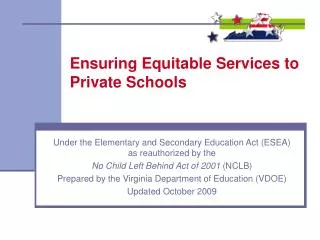
Ensuring Equitable Services to Private Schools
Ensuring Equitable Services to Private Schools Under the Elementary and Secondary Education Act (ESEA) as reauthorized by the No Child Left Behind Act of 2001 (NCLB) Prepared by the Virginia Department of Education (VDOE) Updated October 2009 Private Schools and No Child Left Behind
1.59k views • 118 slides
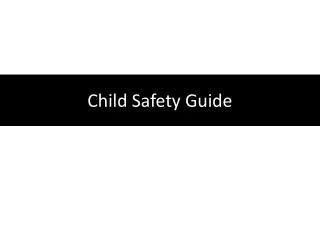
Child Safety Guide
Child Safety Guide. A Collaboration Between National Resource Centers for. Child Protective Services, Action for Child Protection Therese Roe Lund. Legal and Judicial Issues, American Bar Association Timothy Travis. Objective of this Presentation.
1.22k views • 92 slides
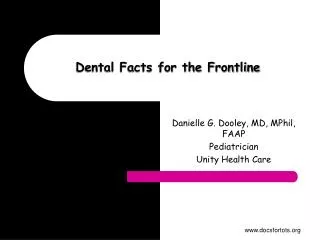
Dental Facts for the Frontline
Dental Facts for the Frontline. Danielle G. Dooley, MD, MPhil, FAAP Pediatrician Unity Health Care. Is Your Child Care, Practice or Organization Dental-Friendly?. Education Preparation Prevention. Are You Advocating for Oral Health?. Ways child care providers can advocate:
1.07k views • 59 slides
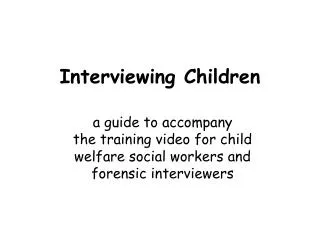
Interviewing Children
Interviewing Children. a guide to accompany the training video for child welfare social workers and forensic interviewers. Contents. What is Child Abuse? Physical Abuse Sexual Abuse The Context of Child Abuse Investigations Qualities of a Purposeful Child Abuse Interview
2.35k views • 81 slides

Overview of Child Development
Overview of Child Development. Child Development. Definition: Change in the child that occurs over time. Changes follow an orderly pattern that moves toward greater complexity and enhances survival. Periods of development: Prenatal period: from conception to birth
2.39k views • 34 slides
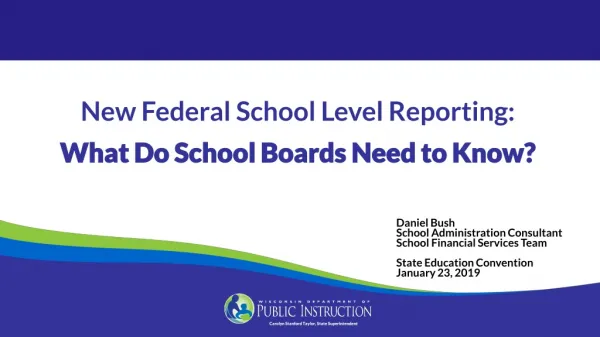
New Federal School Level Reporting: What Do School Boards Need to Know?
New Federal School Level Reporting: What Do School Boards Need to Know?. Daniel Bush School Administration Consultant School Financial Services Team State Education Convention January 23, 2019. Carolyn Stanford Taylor, State Superintendent. Background.
1.63k views • 37 slides

The Ten Keys Of Reading Achievement: Unlocking The Potential Of Every Child
The Ten Keys Of Reading Achievement: Unlocking The Potential Of Every Child. Sponsored by the Oregon Dept. of Special Education with the Office of Curriculum, Instruction and Professional Technical Education in collaboration with the Oregon Parent Training and Information Center
1.12k views • 76 slides
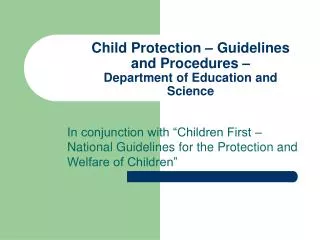
Child Protection – Guidelines and Procedures – Department of Education and Science
Child Protection – Guidelines and Procedures – Department of Education and Science. In conjunction with “Children First – National Guidelines for the Protection and Welfare of Children”. Aim :.
1.05k views • 79 slides
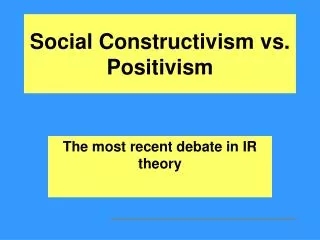
Social Constructivism vs. Positivism
Social Constructivism vs. Positivism. The most recent debate in IR theory. Introduction. Realism, Liberalism, and Marxism together comprised the inter-paradigm debate of the 1980s, with realism dominant amongst the three grand theories.
1.54k views • 34 slides
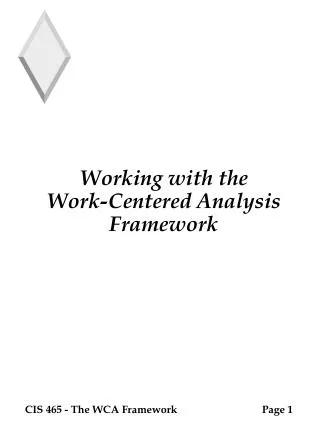
Working with the Work-Centered Analysis Framework
Working with the Work-Centered Analysis Framework. Elements of the Work-Centered Analysis (WCA) Framework:. The internal or external customers of the business process The products (or services) generated by the business process. The steps in the business process .
2.33k views • 19 slides
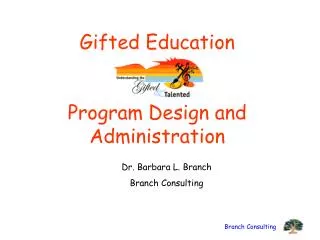
Gifted Education Program Design and Administration
Gifted Education Program Design and Administration. Dr. Barbara L. Branch Branch Consulting. Objectives. Friday Rationale for providing gifted education: Eight Gripes & Advantages Statistical Rationale Rights of the Gifted Child Myths and Realities State Law, Federal Law
1.73k views • 156 slides

Infant / Child Abduction Plan
Preventing Infant/Child Abduction Security Awareness for Maternal Child Health Adapted from National Center for Missing and Exploited Children Guidelines on Prevention of and Response to Infant Abductions (9 th ed.), 2009. Infant / Child Abduction Plan.
5.47k views • 43 slides

Child Nutrition Programs 101
Child Nutrition Programs 101. CSNA Fall Conference 2012. Objectives. To provide an overview of the Federal Child Nutrition Programs & their administration and structure To create an understanding of what is expected of those operating the Child Nutrition Programs
1.05k views • 78 slides

Gifted Education Program Design and Administration. Dr. Barbara L. Branch Executive Director, California Association for the Gifted. Objectives. Friday Rationale for providing gifted education: Eight Gripes & Advantages Statistical Rationale Rights of the Gifted Child Myths and Realities
1.71k views • 158 slides

Raising Awareness About Child Protection
Child-Safe Organisations . Raising Awareness About Child Protection. Today we will talk about …. What child abuse and neglect means Different types of child abuse and neglect Our duty of care and responsibility to protect children. The Alligator River Story.
1.69k views • 82 slides

Child Safety Framework
Child Safety Framework. Central to our core mission. Child Safety Framework. Informs and guides child safety decisions throughout the life of a case. Provides precise language and clear definitions. Strengthens child safety assessments and planning. Guides appropriate placement decisions.
1.2k views • 69 slides

Program Accountability
Program Accountability. Making Education Work for All Children. Paying Attention. Why is it important?. Background. The No Child Left Behind Act (NCLB) The Individuals with Disabilities Education Act (IDEA 2004). Don’t fight forces. Use them. --R. Buckminster Fuller. A New Era.
1.42k views • 121 slides

Cubism, Futurism, Suprematism and Constructivism
Cubism, Futurism, Suprematism and Constructivism. Mike Mitchell. TOK. What do we expect from art? Truth? Seduction? Provocation? Beauty?. Overview. Cubism, Futurism, Supremativism, Constructivism, De Stijl (1905–1920).
1.22k views • 29 slides
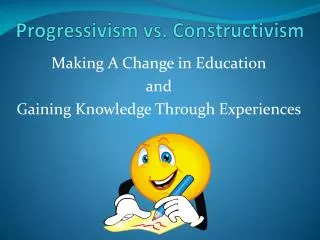
Progressivism vs. Constructivism
Progressivism vs. Constructivism. Making A Change in Education and Gaining Knowledge Through Experiences. Philosophy Survey Results. Progressivism=32 Essentialism=25 Social Constructivism=25 Perrenialism =24 Existentialism=20. Progressivism. Philosophers: John Dewey on progressivism
9.42k views • 20 slides
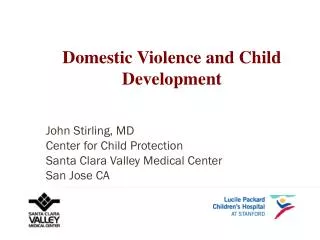

Domestic Violence and Child Development
John Stirling, MD Center for Child Protection Santa Clara Valley Medical Center San Jose CA. Domestic Violence and Child Development. Objective:. To better understand the influences of a violent home environment on child development. Kids and DV: questions. What does DV look like?
1.22k views • 81 slides

Encyclopedia of Evolutionary Psychological Science pp 1–3 Cite as
Child-Centered Learning
- I-Fang Lee 3
- Living reference work entry
- First Online: 18 April 2018
111 Accesses
1 Altmetric
Learner-centered education ; Student-centered learning
A pedagogical practice that places the child’s interests and learning needs at the center of education.
Introduction
The notion of child-centeredness can be traced in the writings of several “classic” Western developmental psychologists and educational philosophers of the eighteenth, nineteenth, and twentieth centuries including Jean Piaget, Lev Vygotsky, Urie Bronfenbrenner Jean-Jacques Rousseau, Johann Heinrich Pestolozzi, Friedrich Froebel, Maria Montessori, and John Dewey. Placing the child at the center, the concept of child-centered learning has multiple roots emerging from the fields of developmental psychology, philosophy, sociology, and education. In its contemporary pedagogical practices, child-centered learning has long been recognized as a progressive and innovative method for teaching students of all ages and learning abilities, ranging from early childhood, to primary, secondary, and tertiary...
This is a preview of subscription content, log in via an institution .
Apple, M. W. (2000). Official knowledge: Democratic education in a conservative age . New York: Routledge.
Google Scholar
Burman, E. (1994). Deconstructing developmental psychology . New York: Routledge.
Cannella, G. S. (1997). Deconstructing early childhood education: Social justice and revolution . New York: Peter Lang.
Dahlberg, G., & Moss, P. (2005). Ethics and politics in early childhood education . London: Routledge Falmer.
Book Google Scholar
Fallace, T. (2015). The savage origins of child-centered pedagogy, 1871–1913. American Educational Research Journal, 52 (1), 73–103.
Article Google Scholar
Lee, I. F., & Tseng, C. L. (2008). Cultural conflucts of the child-centered approach to early childhood education in Taiwan. Early Years, 28 (2), 183–196.
Download references
Author information
Authors and affiliations.
School of Education, The University of Newcastle, Callaghan, NSW, Australia
You can also search for this author in PubMed Google Scholar
Corresponding author
Correspondence to I-Fang Lee .
Editor information
Editors and affiliations.
Department of Psychology, Oakland University, Rochester, Michigan, USA
Todd K. Shackelford
Rochester, Michigan, USA
Viviana A. Weekes-Shackelford
Section Editor information
University of South Carolina – Beaufort, Bluffton, SC, USA
Carey Fitzgerald
Rights and permissions
Reprints and permissions
Copyright information
© 2018 Springer International Publishing AG, part of Springer Nature
About this entry
Cite this entry.
Lee, IF. (2018). Child-Centered Learning. In: Shackelford, T., Weekes-Shackelford, V. (eds) Encyclopedia of Evolutionary Psychological Science. Springer, Cham. https://doi.org/10.1007/978-3-319-16999-6_2439-1
Download citation
DOI : https://doi.org/10.1007/978-3-319-16999-6_2439-1
Received : 16 February 2018
Accepted : 05 March 2018
Published : 18 April 2018
Publisher Name : Springer, Cham
Print ISBN : 978-3-319-16999-6
Online ISBN : 978-3-319-16999-6
eBook Packages : Springer Reference Behavioral Science and Psychology Reference Module Humanities and Social Sciences Reference Module Business, Economics and Social Sciences
- Publish with us
Policies and ethics
- Find a journal
- Track your research

- Importance of Child Centered Education
- On: January 8, 2024
- By: Smile Foundation
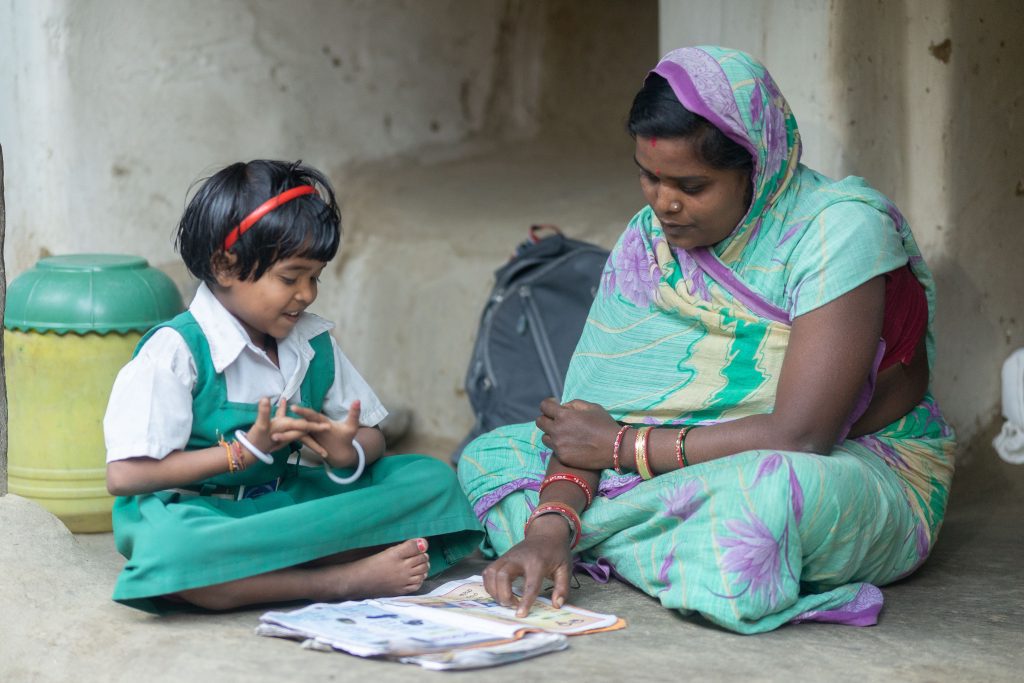
Child-centered education in today’s world is based on the thinking that students must be encouraged to learn at their own pace. Their study exercises should be tailored following their specific needs and with an inclination toward their interests.
The traditional methods of teaching more often do not produce desirable results. It is leading to students losing interest, piling up of home assignments and poor mental health for teachers, students and parents.
Children love to learn when they enjoy their lessons. Child-focused schooling makes learning relevant and fun, giving even the tired students an incentive to keep trying.
The history of children-specific education began in the twentieth century with ideas from John Dewey, Jean Piaget, Lev Vygotsky, and Maria Montessori. It is a reversal from the traditional teacher-centered understanding of the learning process and instead puts students at the center of the learning process.
Child-centered Classroom
Child-centered education begins with teachers involving students in a classroom to share in decision-making processes and believing in their capacity to lead. When a child learns about the relevance of the subject in a discussion it makes learning more interesting for them.
During creative learning when a child chooses the focus of the content he/she can use their imagination to come up with interesting takes on the same subject. Brainstorming and engaging in dialog together helps children to match their interests with the skills and concepts. It requires children to be active participants and responsible participants in their own learning.
Focus on All Areas of Development
The very core of learning centered around children is to help the child achieve holistic development. It includes the development of physical capabilities along with intellectual abilities, cognitive or mental abilities, emotional abilities, and social skills. Child-centered teachers engage in an “active learning” process to help the child develop the knowledge and skills needed in all areas.
The NEP 2020 has reconfigured the curriculum of school education to make students more responsive. The curriculum is more relevant to the developmental needs and interests of learners at different stages of their development. The policy states that classroom learning will regularly contain more creative, collaborative, exploratory and fun activities.
Importance of Play
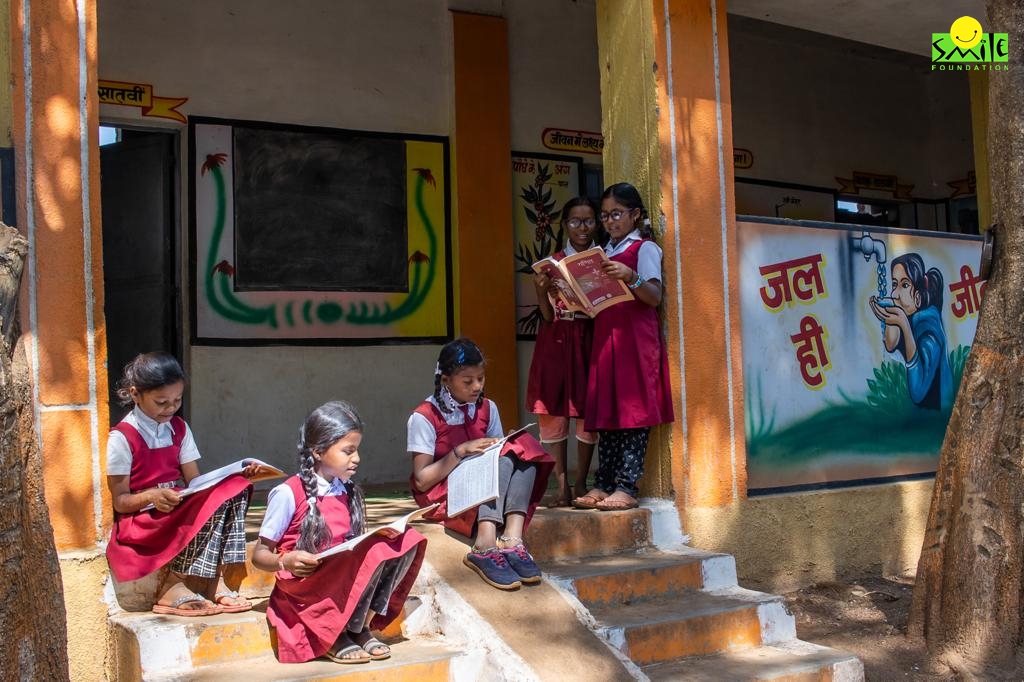
According to many studies, play acts as a medium of learning for children from a very young age. It stimulates early brain development. It allows children to create and imagine, which is an important aspect of child-centered education. Play promotes healthy development and critical thinking skills and reinforces memory.
Playing also provides opportunities for children to learn social interaction. When children play together they learn to cooperate, follow rules, develop self-control, and generally get along with other people.n
New Education Policy (NEP) 2020
While there are many challenges in implementing child-centered learning, these challenges can be met and overcome. In India, it has now started with the introduction of the New Education Policy 2020.
This style of child-centered learning is important for nation-building as it gradually develops independent thinkers, endowed with the tools necessary for lifelong learning.
To know more about Smile Foundation’s campaign on education visit here !
- Tags: Child Centered Education , Child Centric Education , Importance Of Child Centered Education , Modern Child Centered Education
One reply on “Importance of Child Centered Education”
Child centered education is demand of the time.
Leave a Reply Cancel reply
Your email address will not be published. Required fields are marked *
Save my name, email, and website in this browser for the next time I comment.
More To Explore
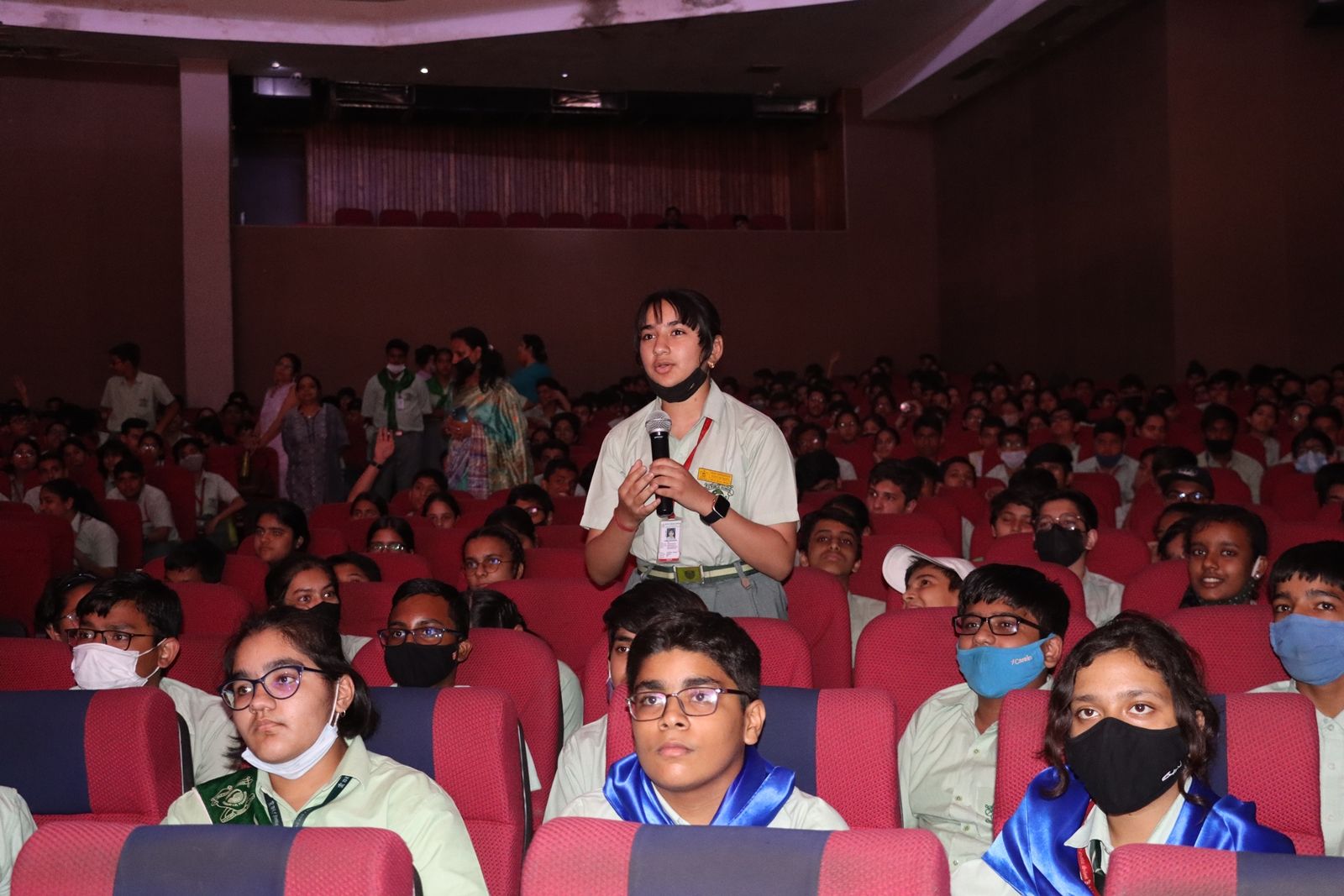
Films for Children: Innovative Ways to Make Learning Fun
Visual learning is a cornerstone of education, and films bring this concept
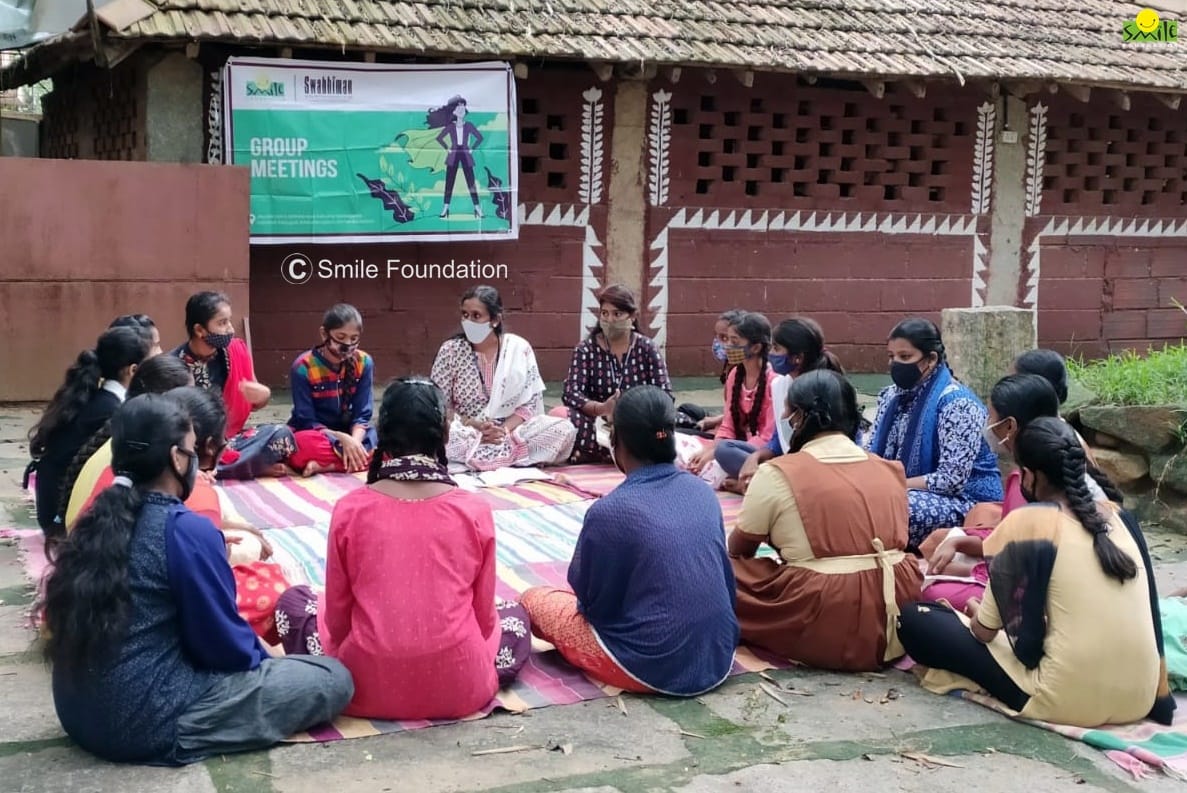
Model Anganwadis: Safe Play and Learning Spaces for All Children
The Integrated Child Development Services (ICDS) of India has long been at
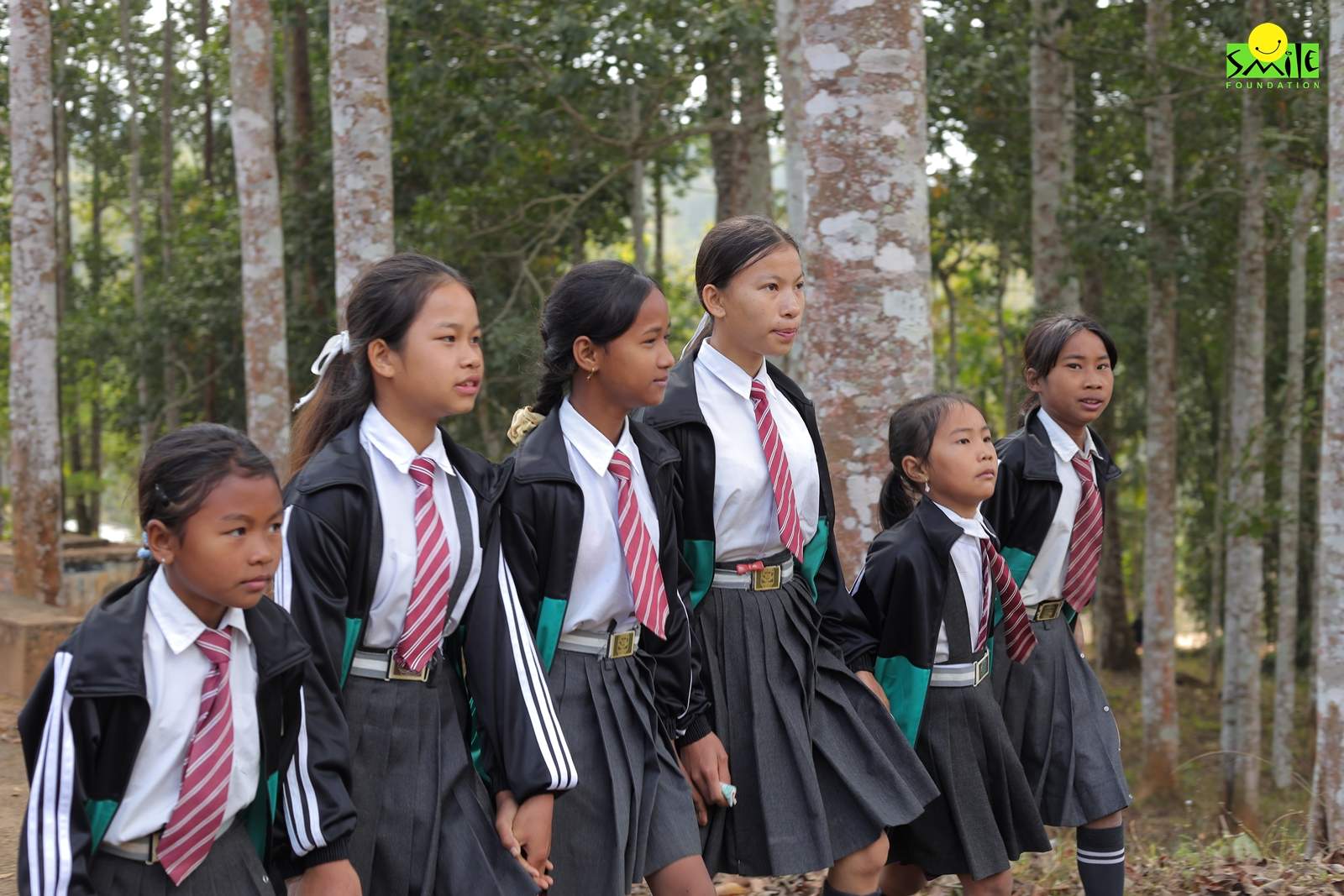
2047 and Role of Early Childhood Care and Education (ECCE)
India, a nation teeming with potential and promise, aspires to stand shoulder
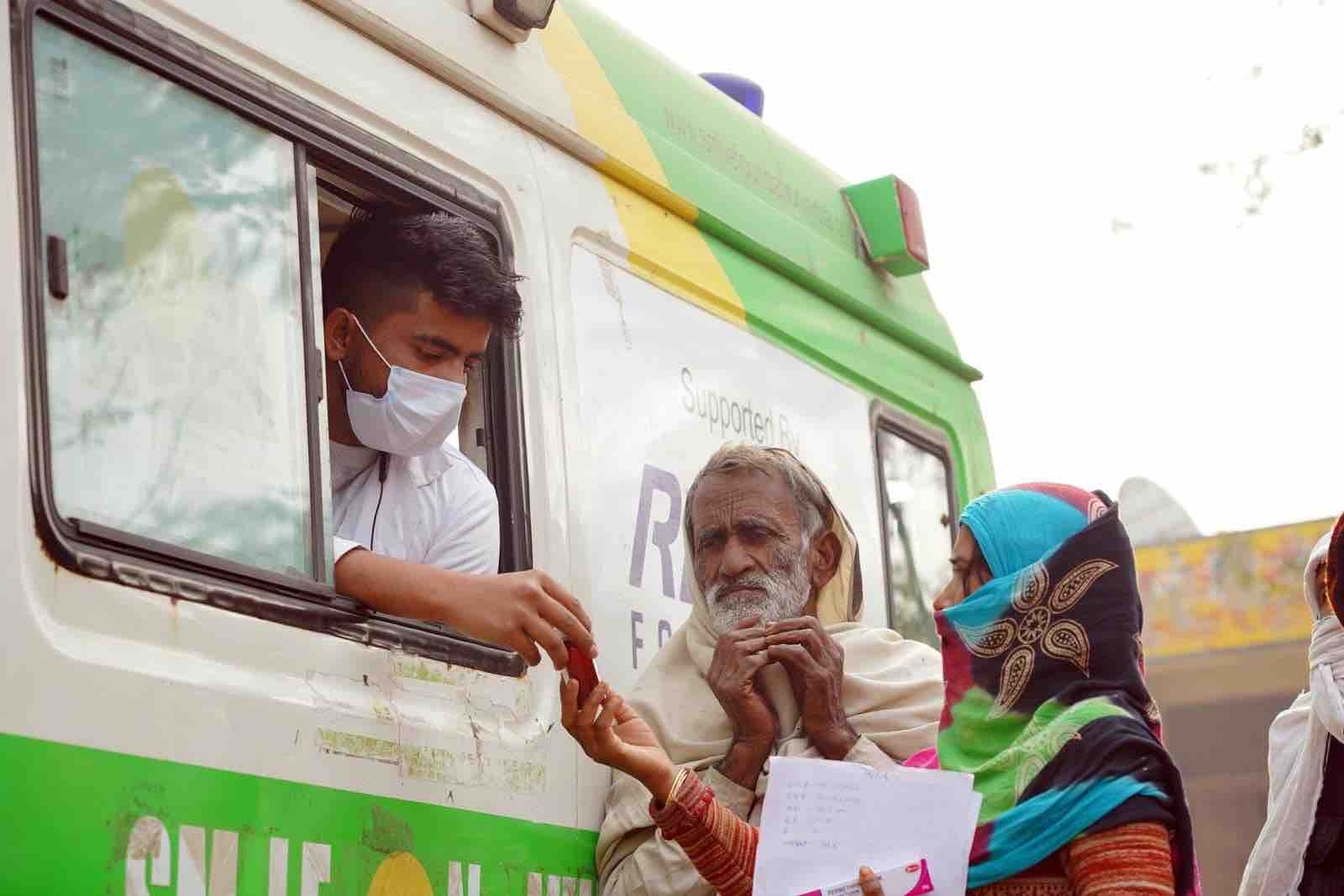
Strengthening Primary Healthcare in India
The healthcare sector of India faces a big challenge with a need
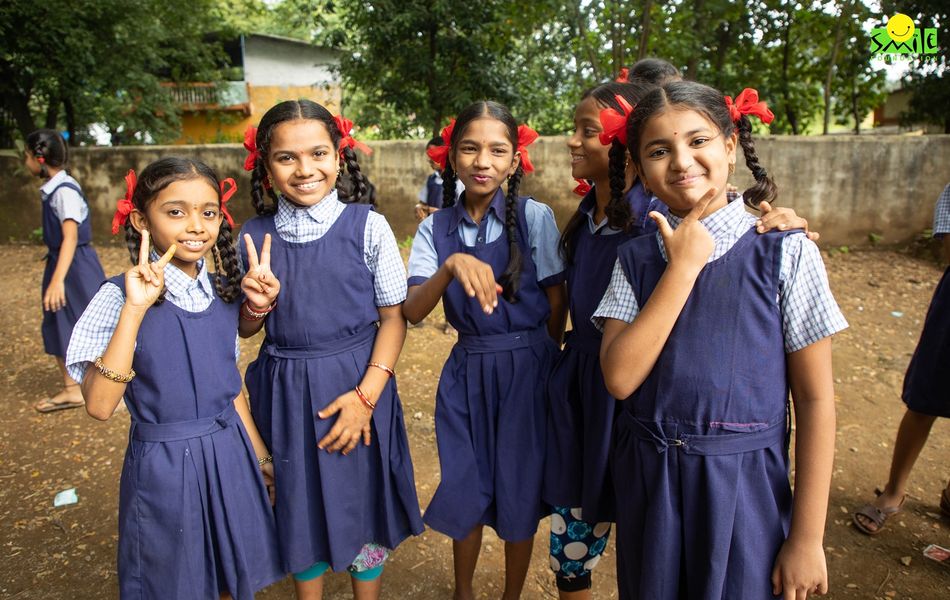
Natural Alignment of Socially-conscious Corporates and Nonprofits
Beyond profits and market share, a new breed of employees seeks more

Happy Women’s Day 2024: Five Trailblazers
Throughout history, the remarkable achievements and invaluable contributions of women to society
BLOG SUBSCRIPTION
You may also recommend your friend’s e-mail for free newsletter subscription.
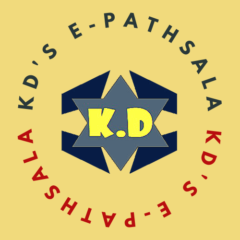
Kd's e-pathsala
True education comes from joy
Concept, Characteristics and Importance of Child-Centered Education

- Introduction to Education
Child-centered education is a sort of revolt against subject-centered education. Child-centered education seeks to provide a natural flow of activity and spontaneous growth of the child. He must be allowed to enjoy complete freedom of action subject to the condition that he should not interfere with the freedom of others.
The teacher’s role is that of an interested observer and at best that of a guide who encourages, advises and stimulates the child, if and when needed. The child is stimulated to activity by his own felt needs and inner drives. Learning takes place as he strives to meet his needs and gives expression to his drives. Here immediate purpose and interests are the motivating factors, which may go on changing with the situation, modern education is child-centered.
Characteristics of Child-Centered Education:
As a child is the Centre of Education, development of mind, body and spirit of the child should be reflected in the programme and planning of education. Rousseau advocates that child should be allowed to learn from nature in his natural way without any interference from the adult, that nothing should be taught to him until he is capable of understanding it, that his individuality should be respected, that his natural interests like play and curiosity should form the basis of his education, and that books should be avoided particularly at the early stage and more emphasis should be given to the child sensory and natural development. The stress laid by Rousseau on the individuality of the child means that the child should be respected, as he is with all his abilities, and drawbacks, that in educating him these should be given due consideration and that all children cannot therefore be treated alike. So children should be treated as the center of education.
- Freedom: Pestalozzi added a new dimension to educational thought and practice by insisting that education was not the privilege of any single class but the right of every child belonging to different classes. Freedom was granted to the child to discover things rather than getting secondhand information through books. Emphasis was given on the freedom of children to learn and create.
- No Discrimination: Child-centric education is above caste, creed, sex and economic and social background of the child. There is no place for discrimination of any kind in child-centered education.
- Self-activities: Froebel developed plays, games and songs and occupations, designed especially to stimulate the child’s self-activity. He laid great stress on the self-development of the child and child’s activity should stem from his own interests.
- Process of spontaneous development: The child progresses at its own speed in a subject. The role of the teacher is to understand the child. The child’s freedom and individuality have found expression spontaneously in the lap of nature.
- Continuous Evaluation: Under a child-centered system of education, the evaluation procedures should be continuous and remedial. Children’s deficiencies are identified and remedial measures are instituted in progressive manner.
- Development of interest and needs: The education of a child depends on his interest and needs. The physical, social, moral and spiritual development of the child is “the main objective of child-centered Education.
- Education-based on experience: The main objective of child-centered Education is to enable the child to learn through experience which is permanent. The course and subjects should be experience- oriented to meet the needs of the child.
Conclusion:
Child is the center of the whole education process. The great philosophers at different times emphasized on it. The role of teacher is like a guide and observer to provide complete freedom to the child to grow naturally. Child-centered Education is the ideal system to manifest the latent talent of the child. In this process education is not an extra venous imposition but natural stimulation for the development of the child.
4 thoughts on “Concept, Characteristics and Importance of Child-Centered Education”
I learned a lot from your blog and most of all thank you for explaining in such a beautiful way.
Hello. This post couldn’t be written any better! Reading this post reminds me of my previous room mate. He always kept chatting about this. I will forward this page to him. Fairly certain he will have a good read. Thank you for sharing.
This article is a gem. I’ve bookmarked it for future reference. Thanks for the valuable insights!
Leave a Reply Cancel reply
Your email address will not be published. Required fields are marked *
Save my name, email, and website in this browser for the next time I comment.
You May Also Like

Aims of Education: Individual, Social, Vocational and Democratic Aim Aims of Education: Individual, Social, Vocational and Democratic Aim
In the history of philosophy generally, one notices progress in ideas and their practical application when the questions are rephrased. ...

শিক্ষামূলক সংস্থা হিসেবে বিদ্যালয়ের ভূমিকা শিক্ষামূলক সংস্থা হিসেবে বিদ্যালয়ের ভূমিকা
সভ্যতার আদি পর্বে প্রত্যেক শিশু তাদের শিক্ষা, নিজ পিতামাতার কাছ থেকেই পেয়ে থাকতো, কিন্তু সময় পরিবর্তনের সাথে সাথে সমাজে যখন ...

Concept of Education : Narrow and Wider Concept Concept of Education : Narrow and Wider Concept
Human life is a continuous stream, from that primitive age to the present day, he has come to this place ...
- Child Development & Pedagogy
CONCEPTS OF CHILD – CENTRED AND PROGRESSIVE EDUCATION
6.1 Child – Centred Learning and its Characteristics :
Child-centred learning is one aspect of progressive education because it considers learning as a natural process for a child in which it learns from carrying out day-to-day activities. Here, the teacher focuses on a child’s learning, not on what the teacher teaches. The teacher must act as a guide who encourages, instructs and stimulates a child as per its needs, because every child has different capabilities and needs.
• The characteristics of child-centred education are as follows :
• It considers the growth of a child as a priority.
• It makes the child’s learning interesting and meaningful.
• It recognises the child’s potential and utilises it effectively.
• It leads to overall development of the child in physical, moral and spiritual areas.
• It enables the child to learn through experiences.
• It provides for the child’s full freedom for natural growth.
6.1.1 Principles of Child-Centred Learning :
• The basic principles of child-centred learning can be best understood through its various aspects given below :
1. Understanding of Child Psychology The teacher/ educator must understand that the children’s behaviour is governed by their requirements, social conditions, abilities etc thus, shifting the focus of instruction from the teacher to the student. Thus, for instance, the teacher will need to adopt different strategies for educating the high intelligence, average intelligence and poor intelligence children.
2. Evaluation and Testing Evaluation of learning is important to understand that it has been effective Traditional testing techniques are replaced in child-centred learning by Continuous and Comprehensive Evaluation (followed by CBSE since 2010). This ensures that the development of the child proceeds as planned and allows corrections to be made where a child is not learning as required. This evaluation is carried out through multiple means like projects, discussions, activities, class tests etc.
3. Syllabus This needs to be upgraded periodically, bu must be based on a psychological analysis of the children’s needs, values and variety required. It should be flexible to take care of all types of learners.
4. Managing Discipline Child psychology is used to manage discipline in a child-centred classroom. The teacher will need to have a flexible response to various kinds of indiscipline indulged in by the learners. He must understand the real reasons behind this behaviour and act accordingly to maintain discipline.
5. Practical Orientation Learners should be oriented towards practical aspects of the topic being taught to them. They must learn the value of experimentation to solve problems. As research in child psychology gives new knowledge of the psychology of children, the teacher should try to implement this knowledge in the classroom.
6. Diagnosis and Dismantling of Problems Various kinds of problems occur in the classroom. The teacher must understand how to categorise each problem and find a solution to it by using his knowledge of child psychology.
6.2 Progressive Education: Meaning and History :
Progressive education is a reaction against the traditional style of teaching. It is a pedagogical movement which values experience over learning facts at the expense of understanding what is being taught. It is based on the idea that we should teach children how to think and that a test cannot measure whether or not a child is an educated The process of ‘learning by doing’ is at the heart of person. this style of learning. It uses ‘hands-on’ projects as a means of learning. The concept of experiential learning (i.e. learning by experiencing) enhances the student’s experience the most. By actively engaging in an activity that puts a student’s knowledge to use, he develops a stronger understanding of the task at hand.
• Theorists who developed the concept of progressive education were as follows :
• Locke He believed that “truth and knowledge… arise out of observation and experience rather than manipulation of accepted or given ideas.” He further mentioned that children need to have concrete experiences in order to learn.
• Rousseau He continued in Locke’s line of thinking by saying that sub-ordination of students to teachers and only memorisation of facts would not lead to an education.
• Fröbel He laid the foundation for modern education based on his understanding that children have unique needs and capabilities. He believed in ‘self-activity’ and play as essential in child education. According to him, the teacher’s role was to encourage self-expression through play, both individually and in group activities. He created the concept of the ‘ kindergarten ‘.
• Dewey He was a principal figure in the Progressive Education Movement’ from the 1880s to 1904, and developed the philosophy of education as well as concrete school reforms. His reactions to the prevailing theories and practices in education, corrections made to these philosophies, and recommendations to teachers and administrators to embrace the style of education, were a major part of the history of the development of educational thinking in the late 19th and early 20th century. Beginning in 1897, Dewey published a summary of his theory on progressive education. This is outlined below
6.2.1 Dewey’s Theory of Progressive Education :
• According to Dewey, progressive education consists of the following five aspects :
1. Education It is ‘participation of the individual in the social consciousness of the race’. The educational process has two sides, the psychological and the sociological, with the psychological forming the basis. A child’s own instincts will help develop the material that is presented to it. This forms the basis of Dewey’s assumption that one cannot learn without motivation.
2. School It must represent the current life; thus, parts of the student’s home life (such as moral and ethical education) should take part in the schooling process. The teacher is a part of this, not as an authoritative figure, but as a member of the community who is there to assist the student.
3. Curriculum The curriculum in schools should reflect the development of humans in society. The study of the core subjects like languages, science, history etc should be coupled with the study of practical skills like cooking, sewing and manual training. Dewey also felt that progress is not in a succession of studies but in the development of new attitudes towards, and new interests in, actual experiences.
4. Method of Education This must be focused on the child’s powers and interests. Information presented to the student will be transformed into new forms, images and symbols by it so that the information fits with its development and interests. The development of this is natural.
5. Social Progress as Related to the School Education the most fundamental method of social reconstruction for progress and reform. Thus, Dewey understood that schools were a means to reconstruct society and so, educationists must be given the proper equipment to help perform this task and guide their students.
6.2.2 Importance of Progressive Education :
• Learners have different capabilities and interests, so they develop in different ways. Thus, progressive education is important, because it takes care of this variation by –
• giving children full opportunity to develop by providing an environment for development.
• not allowing any discrimination between learners.
• educating learners by cooperative learning.
• developing democratic values in the students.
• making education more practical with emphasis on self-learning.
• asking teachers to permit learners to design their own learning experiences according to their interests and capabilities.
• making children work on projects, so that they develop self-confidence, maturity and independence.
• making children learn how to work together with others, which instils discipline in their personalities.
• developing their moral character.
6.2.3 Characteristics and Types of Progressive Education :
From the above discussion, we can deduce the characteristics of progressive education given below –
• Curriculum is designed according to the interests children.
• The approach to education is developmental, meaning that each child has unique needs for its own development.
• Collaborative learning is used for developing social values and skills.
• The teacher works a facilitator.
• Rote learning is discouraged and there is less emphasis on text books.
• Progressive education can be humanistic (focusing on arts and social sciences), constructivist (focusing on the child’s creativity) or Montessori (teachers act as facilitators of learning in this type developed by the Italian doctor and educationist Maria Montessori). These are discussed below –
1. Humanistic This is also called person-centred education. It is an approach to education based on the work of humanistic psychologists like Abraham Maslow and Carl Rogers.
Here empathy, caring about students and genuineness on the part of the learning facilitator (i.e. teacher) were found to be the key traits of the most effective teachers. Important objectives include developing children’s self-esteem, their ability to set and achieve appropriate goals, and their development toward full autonomy.
2. Constructivist This is a philosophy of learning founded on the premise that, by reflecting on our experiences, we construct our own understanding of the world we live in. Its guiding principles are as follows
• Learning starts with the issues around which students are actively trying to construct its meaning. Thus, it eliminates a standardised curriculum.
• The learning process focuses on primary concepts, not only isolated facts. Thus, the educators focus on making connections between facts and fostering new understanding in students.
• The educators understand the mental models that students use to perceive the world and the assumptions they make to support those models. The teachers tailor their teaching strategies to student responses and encourage students to analyse, interpret and predict information. They do this through open-ended questions and promoting extensive dialogue among students.
• The only effective way to measure learning is to make the assessment a part of the learning process, so that it provides students with information on the quality of their learning.
3. Montessori : The Montessori philosophy is a child-directed approach for primary level school children that is based on scientific observation of individuals from birth to adulthood. It is focused on allowing children to make their own choices in learning, with a teacher guiding the process rather than leading it.
Much of the education method relies on hands-on learning, self-directed activity and collaborative play. One of the differences between Dr Montessori’s approach to early childhood education and the approach found in many primary schools is the adoption of elements of the multiple intelligences theory.
6.2.4 Differences between Traditional Education and Progressive Education :
• Traditional education is vastly different from progressive education, as given below –
6.3 RTE ACT :
The Right of Children Free and Compulsory Education Act was proposed on 4th August, 2009. It came into effect on 1st April, 2010 except in the State of Jammu and Kashmir
The RTE Act is the first legislation in the world that pats the responsibility of ensuring enrolment, attendance and completion on the government and provide free and compulsory elementary education upto class 8th and every child.
• The RTE Act and emphasises on the development of both scholastic and co-scholastic areas. to each
• RTE Act lays down norms and standards relation to pupil-teacher ratios, classrooms, separate toilets for girls and boys, drinking water facility, number of school working days, working hours of teachers etc. Each and every elementary school (Primary School + Middle School) in India has to comply with these minimum standards set by the RTE Act.
• As per RTE Act physical punishment and mental harrassment is prohibited. Moreover teacher should not make any discrimination based on gender, caste, class and religion, or screening procedures for admission of children. Any capitation fee is disallowed, private tuition by teachers is also not allowed. Schools should be recognized in order to avail benefits.
• RTE Act also mandates that no child can be held back or expelled from school until class 8th. The Act has mandated the Continuous Comprehensive Evaluation (CCE) method to ensure grade appropriate learning outcomes.
• RTE Act is backed by Grievance Redressal Mechanism that gives opportunity to people to take action against non-compliance of various provisions of the Act.
6.4 Mid Day Meal Scheme :
• The mid day meal scheme is a school meal programme of the Government of India designed to improve the nutritional shades of school age children nationwide.
• The programme is the largest programme in the world and supplies free lunches on working days for children in primary and upper primary classes in government and government aided schools.
• This Scheme is covered by the National Food Security Act 2013.
• The scheme came into force with the Supreme Court Order dated 28h November 2001 which requires all government and government assisted primary schools to provide cooked mid day meals.
• The meals are cooked on-site by local cooks and helpers or self-help groups. It allows monitoring by teachers.
• The quality and nutritive value of the meals needs to be monitored on regular basis so that maximum underprivileged children are benefitted.
6.5 Sarva Shiksha Abhiyaan :
Sarva Shiksha Abhiyaan or Universalisation of Education is one of the most fundamental and promising schemes of government of India.
• Each one Teach One, this programme we introduced in 2000-2001 the flagship programme by government of India.
• This scheme aims to provide useful and relevant elementary education for all children in the age group of six to fourteen by 2010.
• The Sarv Shiksha Abhiyan aims to bridge Social, regional and gender gaps, with the active participation of the community in the management of schools.
• This SSA programme is an endeavour to provide an opportunity for improving human capabilities of all children, through the provision of community owned quality education in a mission mode.
Main Features of Sarva Shiksha Abhiyaan are :
• Programme with a clear time frame for universal elementary education.
• A response to the demand for quality basic education all over the country.
• An opportunity for promoting social justice through basic education.
• An expression of political will for universal elementary education across the country.
• A partnership between the central, state and the local government.
CHAPTER EXERCISE
1. Who created the concept of the kindergarten?
(1) Montessori
(3) Rosseau
2. Which of the following statements did John Dewey believe in?
(1) Curiosity is not innate; rather, it is acquired
(2) Learners must be observed in the classroom but there is no need to give them feedback
(3) A learner is an active participant and problem solver
(4) Democratic space in the classroom hinders the learning process
3. John Dewey advocated “Lab schools”. These schools are an example of
(1) factory schools
(2) private schools
(3) government schools
(4) progressive schools
4. Dewey’s emphasis on the importance of classroom shifted the focus of education from the teacher to the students.
(1) authoritative discipline
(2) democratic relationships
(3) liberal thinking
(4) directed instruction in the
5. Which of the following is the role of the school in progressive education, as per Dewey?
(1) It must respresent the current life
(2) To reflect due development of humans in society
(3) To present material to the child to develop into understanding
(4) None of the above
6. More effective learning opportunities can be provided to students by
(1) giving detailed explanation of all topics
(2) using more teaching aids
(3) conducting periodical tests
(4) basing the teaching on real-life situations
7. A school founded on the progressive ideology will expect all students to
(1) actively construct knowledge by participation and collaboration
(2) follow the teachers’ instructions faithfully
(3) get good marks in all exams
(4) learn what the teachers teach without questioning
8. Sarla, a Hindi teacher, never answers directly a question raised by a student in class. Instead, she gives other students time to think of the answer, discuss in group etc, before leading them to the correct answer. She is following which of the following approaches to teaching?
(1) Behaviourist
(2) Traditional
(3) Progressive
(4) None of these
9. A ‘progressive’ teacher should always motivate her students to –
(1) ask all the queries they have
(2) acquire knowledge of the content given
(3) interact actively in any discussion in the classroom
(4) participate occasionally
10. Which one of the following is not a basic feature of progressive education?
(1) It considers each child as the same
(2) Integrated curriculum approach is
(3) Less emphasis is laid on text books
(4) Curriculum is designed as per the interests of children
11. Montessori education is basically for –
(1) women’s education
(2) teenage children
(3) older students
(4) young children
12. Teachers and students draw on one another’s expertise while working on complex projects related to real world problems in classroom.
(1) teacher-centric
(2) social-constructivist
(3) traditional
(4) constructivist
13. Humanistic education focuses on –
(1) arts and social sciences
(2) only science
(3) only arts
(4) social and political science
14. Shailaja, a Social Science teacher, wants her students to give creative answers to her questions. For this to happen, she should –
(1) lecture them on the subject
(2) ask questions from the text book exercises
(3) ask open-ended questions which are not restricted to a given framework
(4) maintain a high level of discipline in the classroom
15. Which one of the following is a feature of traditional education?
(1) Students obey discipline in the class
(2) Parents are treated as the primary teachers
(3) Society is an extension of the classroom
16. What is the cardinal principle of child-centred education?
(1) Learning by doing
(2) Learning by living
(3) All of the above
17. The best learning is that in which –
(1) it is given by a knowledgeable teacher
(2) the pupils learns themselves
(3) it is given by using educational technology
18. Which of the following is not a feature of child-centred education?
(1) It makes learning interesting and meaningful
(2) It stresses on timely completion of the syllabus
(3) It provides complete freedom to the child to grow naturally
(4) Growth of the child is a priority
19. A teacher, because of his/her democratic nature, allows students to sit all over the class. Some sit together and discuss or do group reading. Some sit quietly and read by themselves. A parent does not like it. Which of the following may be the best way to handle the situation?
(1) Parents should complain against the teacher to the principal
(2) Parents should request the principal to change the section of their ward
(3) Parents should show trust in the teacher and discuss the problem with the teacher
(4) Parents should take away the child from that school
20. In the context of the basic principle of child centred education, match the following.
Principle :
1.Social learning as a method and a goal 2. Active self- regulated learning 3. Orientation on the needs of the children 4. Addressing performance assessments in an encouraging manner
Characteristic :
(A) Models to conduct respectful argumentation and conflict resolution (B) Having access to guidelines and opportunities for self- assessment of their performance (C) Cooperating and discussing scholastic topics with others (D) Having a say in the planning and design of the topics/units of instruction
Previous Years Questions
21. Which of the following will foster creativity among learners ?
(1) Teaching the students the practical value of good education
(2) Providing opportunities to question and to nurture the innate talents of every learner
(3) Emphasising achievement goals from the beginning of school life
(4) Coaching students for good marks in examination
22. Which of the following should be considered the most important quality of a teacter at primary level ?
(1) Eagerness to teach
(2) Patience and perseverance
(3) Competence in methods of teaching and knowledge of subjects
(4) Competence to teach in highly standardised language
23. Which of the following is a feature of progressive education?
(1) Flexible time-table and seating arrangement
(2) Instruction based solely on prescribed text-books
(3) Emphasis on scoring good marks in examinations
(4) Frequent tests and examinations
24. The emphasis from teaching to learning can be shifted by
(1) focusing on examination results
(2) adopting child-centred pedagogy
(3) encouraging rote learning
(4) adopting frontal teaching
25. In the progressive model of education as implemented by CBSE, socialisation of children is done in such a way, so as to expect them to –
(1) give up time-consuming social habits and learn how to score good grades
(2) be an active participant in the group work and learn social skills
(3) prepare themselves to conform to the rules and regulations of society without questioning
(4) accept what they are offered by the school irrespective of their social background
26. In context of progressive education, which of the following statements is true, according to John Dewey?
(1) There should not be a place for democracy in a classroom
(2) Students should be able to solve social problems themselves
(3) Curiosity does not belong to the inherent nature of students rather it is be cultivated
(4) Students should be observed and not heard in the classroom
27. Teachers, in order to help learners construct knowledge, need to focus on
(1) making sure the es everything
(2) scores/ marks obtained by the learner
(3) involving the learner for active participation
(4) mastering learning of concepts by the learner
28. Children have the potential to create knowledge and make meaning. From this perspective the role of a teacher is that of a
(1) communicator and lecturer
(2) facilitator
(3) director
(4) negotiator
29. Child-centred education involves
(1) children sitting in a corner
(2) learning in restricted environment
(3) activities that do not include play
(4) hands on activities for kids
30. Child-centred pedagogy means
(1) giving moral education to the children
(2) asking the children to follow and imitate the teacher
(3) giving primacy to children’s voices and their active participation
(4) letting the children be totally free
31. Which one of the following situations is illustrative of a child-centred classroom?
(1) A class in which the teacher dictates and the students are asked to memorise the notes
(2) A class in which the textbook is the only resource the teacher refers to
(3) A class in which the students are sitting in groups and the teacher takes turns to go to each group
(4) A class in which the behaviour of students is governed by the rewards and punishments the teacher would give them
32. In a progressive classroom set-up, the teacher facilitates learning by providing an environment that
(1) is restrictive
(2) discourages inclusion
(3) encourages repetition
(4) promotes discovery
Related posts:
Leave a reply cancel reply.
Your email address will not be published. Required fields are marked *
Save my name, email, and website in this browser for the next time I comment.
You cannot copy content of this page

- Make a Gift

Head of School Matthew Gould Reflects on the Benefits of Child-Centered Teaching and Whole-Child Education

- Preferences

Child Centered Pedagogy In Early Childhood Education PowerPoint PPT Presentations

Creative Design
Presentations
Video & Audio

drag logo to the bookmark bar and collect pikbest
Applicable for: individual advertiser, individual YouTuber, individual lecturer, individual audio book author, personal freelancer
Enterprise permissions
Copyright Security
Multi-Account Use
Enterprise Authorization
Industry-leading legal protection
Authorized Use Range
Copyright Notice:Abusing Pikbest content without the authorization is prohibited,you may be liable for any violation.
become affiliate make money
share links
video about us
What’s Templates
advertise cooperate
advertise with pikbest
Child Centered Education PowerPoint Templates And Google Slides Themes
3209 results

Education teaching reading sharing child knowledge competition PPT template
Format: pptx
Category: PowerPoint
Designed by: 大海广告①线23386766

Children's early childhood education center cartoon training PPT

Infant Life Center Newborn Care Baby Education PPT
Designed by: 壹德

red circle is in the center of four-panel design
Designed by: SLIDESDOCS

the four sections of circle with dollar sign in center

Unlocking the Key: A Pie Chart at Center of Analysis

group of four squares with red circle in the center

Circular Graphic Featuring a Dollar Sign in the Center

group of four squares with person in the center

"Blue-Centered Circle Diagram"
cell phone with call center icon on the screen

"Unlocking Financial Success: Flow Chart Featuring Dollar Symbol at Center"

graphic showing the different levels of data center

"Creative Pie Chart Design Featuring a Light Bulb Center"

orange and purple circle with person's face in the center

colorful hexagonal design with heart in the center

spiral diagram with colored dots in the center

blue and green logo for medical center

dart is in the center of bulls eye

"Improve Your Aim with Targeting Arrows Towards the Center"

Pink Center White Plate with Circles and Dots - A Creative Design Touch

"Pie Chart Graphic Featuring a Question Mark Center"

"Centered Circular Logo Design Featuring Cloud and Computer Elements"

"Visualizing a Data Center Network with Connected Devices: A Comprehensive Diagram"

"A Circular Graphic Featuring a Hand with Thumbs Up at the Center"

graphic of person holding their hand in the center circle

colorful puzzle piece with the letter e in center

House Diagram Featuring a Pie Chart in the Center

graphic of pie chart with person in the center

"Comparison of Four Colorful Circles Including Blue Circle with Green Center"

graphic of target with arrows pointing to the center

graphic of blue circle with arrows pointing to the center

diagram of group circles with blue center surrounded by yellow

orange circle with white center surrounded by smaller circles

three circles with blue and white center

orange and brown logo with leaf in the center

graphic of circle with dollar sign in the center

Create an Attention-Grabbing Pie Chart Featuring a Blue Circle Center

diagram of circular object with pink center

arrows in the center of target

graphic of four squares with flow charter in the center

circular diagram with key in the center

blue circle and with center

three gears connected to each other with house in the center

graphic of medical device and person in the center circle

graphic of two circles with red center and green
How do you like the search results?
Thank you for your Feedback!
Related Searches:
Great to have you back! Log in to see more
Start your free trial
Register to get 2 free downloads/day
Wrong password
By creating an account, I agree to Pikbest’s Term’s of Service , License Agreement and Privacy Policy
Not a member? Sign Up
Free download millions of high-quality assets.
Sign up free to see more
Already have account? Log In
Welcome to find more free high-quality assets.
Log in to enjoy free download everyday
join the creator community
Upload your first copyrighted design. You can get a $10 cash bonus

- Design Templates
- Office Templates
- Multimedia Templates
- Decoration Templates
- Support FAQ
- Refund Policy
- Terms of Service
- License Agreement
- Privacy Policy
- Copyright Information
- Intellectual Property Rights
Become Affiliate Advertise with us
Unlimited downloads.
13,249 Premium Members joined us
Added Today

1) Share the above link 2) The invitee registers via the link 3) Both of you get 3 downloads for ALL CATEGORIES
Upgrade to our Premium Plan for unlimited downloads.
Free downloads unlocked
You've unlocked Today's Free Downloads. Check it out in your account and make sure to use it

Add shortcut to your desktop. Easily get back to Pikbest !

- Gandhi's Educational Thoughts
Got any suggestions?
We want to hear from you! Send us a message and help improve Slidesgo
Top searches
Trending searches

ottoman empire
21 templates

st patricks day
12 templates

global health
150 templates

148 templates

41 templates
Early Childhood Center
Early childhood center presentation, free google slides theme and powerpoint template.
If you’re an educator looking to promote your childcare center, you’ve come to the right place. Emphasize the importance of schooling and development in the early years of a child’s life with this dynamic and motivational presentation for your daycare center.
There’s so much young parents look for when deciding whom to leave their little ones with when they’re off at work. As a child educator, it’s your job to assure parents they can entrust you with their children. This early childhood center presentation does just the trick. We’ve used vibrant colors and pictures of babies and toddlers to relay a feeling of love and care. The variety of shapes used also aims to motivate. A curvy sans-serif font is used for a more youthful and childlike touch.
Features of this template
- A bright and dynamic template with plenty of shapes and colors to motivate parents
- 100% editable and easy to modify
- 25 different slides to impress your audience
- Available in five colors: Orange, yellow, green, blue and red
- Contains easy-to-edit graphics, maps and mockups
- Includes 500+ icons and Flaticon’s extension for customizing your slides
- Designed to be used in Google Slides and Microsoft PowerPoint
- 16:9 widescreen format suitable for all types of screens
- Includes information about fonts, colors, and credits of the free resources used
How can I use the template?
Am I free to use the templates?
How to attribute?
Combines with:
This template can be combined with this other one to create the perfect presentation:

Attribution required If you are a free user, you must attribute Slidesgo by keeping the slide where the credits appear. How to attribute?
Available colors.
Original Color
Related posts on our blog

How to Add, Duplicate, Move, Delete or Hide Slides in Google Slides

How to Change Layouts in PowerPoint

How to Change the Slide Size in Google Slides
Related presentations.

Premium template
Unlock this template and gain unlimited access

Register for free and start editing online

IMAGES
VIDEO
COMMENTS
4. DEFINITION • Child / Student-Centered Design • Designed to develop the individual and social qualities of a student rather than provide a generalized information or training by way of prescribed subject matter (used of elementary or secondary education or schools) • Children take command of their own learning. Teachers are there to provide support and facilitate the child's learning ...
It encourages children to dream and create, which is crucial to child-centred education. Child-centred education strengthens memory while encouraging healthy development and critical thinking abilities. Child-centred education also gives kids the chance to practise social skills. Children learn to cooperate, adhere to rules, hone self-control ...
The importance of child centered education is clear: children are more likely to have better self-esteem, a deeper understanding of the material they are learning, and will be able to take information away from their peers as well as teachers. Without these things, children run the risk of being less engaged in their education which will ...
J.krishnamurthy - child centered education. 1. NEHA MISHRA B.Ed. (I-SEM.) JYOTI PUROHIT Dr. J. KRISHNAMURTHY SESSION-2021. 3. Jiddu Krishnamurthy was a philosopher, speaker and writer. He was born in south India in what is now the modern day Madanapalle of Andhra Pradesh. Jiddu Krishnamurthy was brought to England by Annie Besant (president of ...
3 Sriprakash, A, 'Child-centred education and the promise of democratic learning: pedagogic messages in rural Indian primary schools', in International Journal of Educational Development, 30, 2010, pp. 297-304. 4 UNESCO 2012 Position paper on education for children with disabilities -
Constructivism & Child Centered Education Susan Guidaboni & Jessica Scanlon Advanced Seminar in Child Centered Issues Summer 2011. What is Constructivism? • Constructivism is a learning theory that suggests that human beings create their own learning based on interactions and experiences they encounter and come into contact with first hand.
The dominant constructions of child-centeredness across contemporary global education systems have primarily reflected Western sociocultural narratives of the child to form the basis of child-centered pedagogy (e.g., see Lee and Tseng 2008).While it is significant to place the child in the center of his/her education to support and facilitate the child's learning and development, it is also ...
In Australia, a child-centred approach to teaching and learning is promoted in Early Childhood Education and Care, and in schools [13,14]. Child-centred education takes a "strengths-based" view [13,15]; identifying a child's current "skills, capacities, dispositions, interests and motivations" (p. 7) and the strategies that work for ...
It allows children to create and imagine, which is an important aspect of child-centered education. Play promotes healthy development and critical thinking skills and reinforces memory. Playing also provides opportunities for children to learn social interaction. When children play together they learn to cooperate, follow rules, develop self ...
Abstract. Child-centered education has been a long-held dream for Indian schools. It has occupied an important place in formal schooling since the National Policy on Education-1986 was introduced ...
The document discusses the key characteristics of child-centered education. It states that child-centered education seeks to provide a natural flow of activity and spontaneous growth for the child. The teacher's role is to observe and guide the child, stimulating them when needed. Learning takes place as children strive to meet their own needs and interests. The document outlines five ...
CHILD CENTERED CURRICULUM DESIGN - Download as a PDF or view online for free. Submit Search. ... Journal Of Education and Practice, 1(27),1-9. Nkutumba,R.(2020) advantages and disadvantages of student centered learning . Journal Of English Language and Literature 8(1), 132-134. R.O Igwe, 2000.Fundamentals of Curriculum and Instruction ...
In a child-centered education, the curriculum begins with the needs and interests of the child and responds to the unique characteristics of childhood. Teachers use their knowledge of how ... modern concept of democratic government in which citizens act autonomously and rationally in pursuit of individual rights and interests. More recently ...
The physical, social, moral and spiritual development of the child is "the main objective of child-centered Education. Education-based on experience: The main objective of child-centered Education is to enable the child to learn through experience which is permanent. The course and subjects should be experience- oriented to meet the needs of ...
Child-centred learning is one aspect of progressive education because it considers learning as a natural process for a child in which it learns from carrying out day-to-day activities. Here, the teacher focuses on a child's learning, not on what the teacher teaches. The teacher must act as a guide who encourages, instructs and stimulates a ...
Whole-Child Education. Child-centered instruction means using the child as the starting point for lesson plans and for developing curriculum. Within that is this notion of whole-child education, which means that we're not just looking at children to fill up with academic information. We see children as whole human beings who have academic ...
Arora, "A teacher making use of child-centred approach ensures that each and every child acquires the minimum level of competencies in all the subjects." 9. Not Soft-Pedagogy. Child-centred approach is not 'soft- pedagogy'. It is creating a child-centred ethos in the school under which child's right to education must be recognised.
The History of Early Childhood Education - Education D - 9.01 - History * D - 9.01 - History * Sociocultural Theory- Implications for Teachers Incorporate each child s family and culture into the school.
The Power of Community-Centered Education - Download as a PDF or view online for free. Submit Search. Upload. ... The child centered curriculum. The child centered curriculum Yolanda Sobrepena Modern aims of education in the philippines.
Are you looking for Child Centered Education powerpoint or google slides templates? Pikbest have found 14132 great Child Centered Education Powerpoint templates for free. More animated ppt about Child Centered Education free Download for commercial usable,Please visit PIKBEST.COM
Education should lead to economic independence and self-reliance for livelihood. Thus, in Gandhiji's educational thoughts the development of the personality of child is more important than mere literacy or knowledge of different subjects. In other words he believed in life-centered as well as child-centered education.
As a child educator, it's your job to assure parents they can entrust you with their children. This early childhood center presentation does just the trick. We've used vibrant colors and pictures of babies and toddlers to relay a feeling of love and care. The variety of shapes used also aims to motivate. A curvy sans-serif font is used for ...